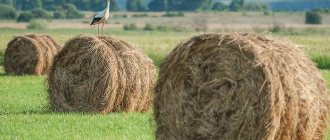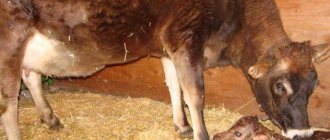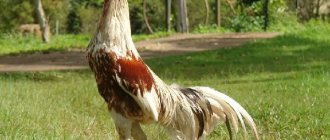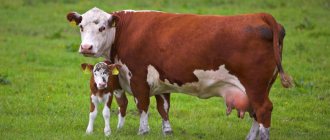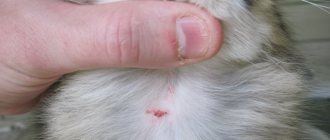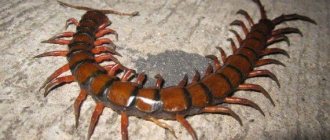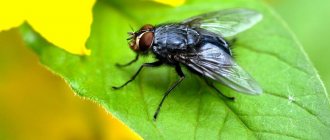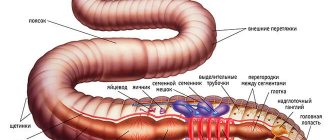The cow is a ruminant animal. Their digestive tract is more complex than other mammals, so even minor deviations in the diet are fraught with failure. If a cow's stomach has stopped, it is necessary to immediately identify the source of the problem and begin treatment. Let's look at what exactly can cause stomach constipation, why overeating is dangerous, and how to act in such a situation.
What to do if a cow has eaten too much crushed grain
There are several steps you can take personally to help relieve your pet's condition. The use of certain medications is also recommended, but only after consulting a veterinarian.
First aid
The first thing the owner should do is help the stomach begin its work. To do this, it is recommended to drive the cow, make it active, run and warm up a little, as this stimulates the whole body. Another first aid remedy is rinsing. But washing a tripe is quite a difficult task for a non-specialist.
Next comes the most difficult part - the treated end must be inserted through the esophagus to the scar (about 1.5 meters deep). In this case, it is imperative to hold and calm the animal and talk to it. So it is better to take someone else with you to help with the procedure itself or to keep the cow in a stable position.
After this, the free edge simply falls down - the water gradually begins to come out along with the accumulated contents. If everything works out, you can add a little rumen fluid taken from a healthy cow. Afterwards, be sure to consult a doctor.
But the treatment does not end with washing. Next, be sure to give 2-3 tablespoons of soda, diluted in 1 liter of water, several times every day. This mixture neutralizes stomach acid.
Read also: Facts about washing your face
They also give a lot of warm water with simple baker's yeast: about 200–250 grams of yeast are diluted in 10 liters of warm water, the mixture is given several times a day. Another folk remedy is to give cucumber pickle (twice a day, 8–10 liters at a time).
Only a qualified doctor can prescribe medications, especially in severe cases:
- Most often, therapy involves taking special enzymes that stimulate the digestion process.
- If the animal has been suffering for more than a day, it is recommended to give antibiotics to suppress pathogenic microflora, for example, Macerobacillin or Tetracycline tablets (about 100 grams twice a day for an adult cow, 50 grams for a baby).
- Sometimes they also give ruminators, which help the stomach and rumen to cleanse (the dosage depends on the weight of the animal).
- Hellebore tincture or tympanol have worked well (they cause vomiting).
After consultation, the veterinarian may prescribe injections of vitamin B1 several times a day in an amount of 2 to 5 grams, depending on the complexity of the disease and age. In particularly acute or advanced cases, droppers with glucose or sodium chloride may be prescribed.
We invite you to familiarize yourself with Slaughter of cattle in meat processing plants: rules, technology, methods and methods || How cows are killed in a slaughterhouse
Prevention and feeding rules for cattle
To prevent overeating in a cow, it is necessary to follow the recommendations for feeding ruminants and carefully monitor the pet’s health and its changes. It is necessary to note what exactly the cow eats, how it reacts to a change in food, how the body responds to new or untested food, and whether the animal feels good after it.
Prevention of overeating includes:
- monitoring and controlling the diet, especially the amount of feed;
- limiting the amount of foods that cause fermentation (cabbage, turnips, alfalfa, soybeans and potatoes);
- monitoring the quality of food - do not feed raw food or moldy grain;
- if you plan to pasture to a new pasture after wintering or a rainy period, you need to give a little hay to stimulate the stomach.
General rules for feeding cattle:
- the diet should include both dry and green food (if possible in winter);
- feed, cakes and bran with a large amount of protein are given in very limited doses (no more than 4 kg per day);
- if it is not possible to provide green grass, it is replaced with carrots, potatoes, cabbage, and beets;
- The diet must contain vitamins (dry concentrated food already contains them), they can be given separately;
- Green food should be introduced after wintering gradually and in small quantities;
- for proper nutrition, cows are given a little simple salt or chalk (up to 60 grams per day);
- melons are also included in the diet, especially pumpkin, as it allows you to obtain tasty butter from milk;
- The cow must have constant access to water in unlimited quantities.
Video: feeding cattle At the first symptoms of the disease, be sure to contact a veterinarian, especially if they manifest themselves very acutely. Only a doctor can prescribe precise treatment and monitor the animal’s condition.
The gastrointestinal tract of cattle is a rather complex system. And even a slight disorder can lead to difficulties that need to be eliminated as soon as possible. If therapy is not carried out quickly, the milk yield will suffer, or the animal may die. What to do if a cow gets blown away? First of all, control the cattle’s diet and make proper hay preparations. We will talk about this in the article.
How to help start a cow's stomach
The cow has eaten too much crushed food - what to do? Sometimes a simple walk helps when digestion stops. The animal should be given a good run to start the digestive system and increase the release of gases.
But if this option does not help, you need to seek the help of a specialist. However, he cannot always quickly come to the rescue. This is especially true for remote villages. But time does not wait; an individual can die in a few hours. Therefore, first aid will be required.
How to start a cow's stomach? There are medications and traditional cures.
Traditional methods include:
- Soda solution (dilute 3 tablespoons of baking soda in 1 liter of water) - give to the person several times a day. This method helps get rid of stomach acid.
- Vegetable oil - pour in a large amount several times a day. Afterwards, give the animal decoctions of chamomile and mint.
- Activated carbon, magnesium oxide - for the removal of gases.
- When tympanying, the cow is bathed in a cool pond. Water puts pressure on her body and helps improve gas formation. If there is no pond, the animal can be doused with cold water.
- A solution of manganese or vodka with water in a 1:1 ratio in a volume of 1 liter. Administered through a tube. Relieves gases.
- Enema with saline solution or laundry soap.
- In more severe cases, wash the scar using a special probe or hose. It is carefully inserted into the esophagus and 4 buckets of water are poured through it.
- Removing foreign objects from the esophagus using a probe.
- Scar puncture - this method is used as a last resort. To do this, a special surgical instrument, a trocar, is used to pierce the skin and the area of the hungry fossa and release gases.
Treatment of corn poisoning
Severe forms of corn poisoning require hospitalization of the patient in the toxicology department.
After gastric lavage with a rubber tube, the patient is administered the following medications:
- Saline solutions.
Intravenous drip will prevent dehydration of the body. In this case, positive dynamics are noted when prescribing solutions:
- Lactosol;
- Acesol,
- Disol et al.
When there is no pronounced gag reflex, Regidron or Oralit is used orally.
- Enterosorbents. To improve the absorption of toxins, use Polysorb, Atoxil, Smecta or Enterosgel.
- Antiemetics. Cerucal or Motilium are particularly effective.
- Antipyretic drugs and NSAIDs (Paracetamol, Ibuprofen, Ibuklin, Nimesil, etc.) are prescribed in case of fever and chills with increased temperature.
- Probiotics. This group of drugs is intended to restore beneficial intestinal microflora. Therefore, the patient is prescribed one of the following drugs:
- Bifiform;
- Baktisubtil;
- Linux;
- Bifidumbacterin.
Reasons for the development of tympany
One of the reasons for the development of the disease is an incorrect transition from stall feeding to a summer diet. Animals can eat a lot of juicy grass, which will lead to gas formation and increased foam content in the rumen. The body needs to be saturated with minerals and vitamins, but in the first 2 weeks you should choose poor pastures where small plant shoots are visible.
- treatment will be required if the animal has eaten a lot of root vegetables and their leaves, mowed juicy grass that has been too warm in the sun;
- the diet should not include rotten vegetables;
- a cow will become bloated if she has eaten a lot of fresh alfalfa, clover, or corn;
- lack of roughage in the diet; roughage stimulates belching;
- grass wet from dew or rain, cold or frostbitten will lead to disturbances in the gastrointestinal tract: bloating is observed;
- the development of tumors in the esophagus or in the scar leads to the absence of belching;
- papillomatosis in the scar disrupts proper muscle function;
- non-compliance with the drinking regime after abundant feeding of succulent feed;
- Young animals often develop tympany when switching to artificial feeding.
Animals should absolutely not be given a lot of water after walking them in a field with alfalfa or corn. You need to wait 1-2 hours, then take the animals to water. Young animals are not given skim milk after feeding them vegetables or succulent grass. After an hour, warm water is given.
Warning Signs: Why Your Cow Won't Chew the Cud
Burenka is a ruminant animal. This process, called rumination, is characterized by a large production of saliva (about 200 liters per day), especially when eating roughage. Saliva moisturizes, breaks down food, and also normalizes the acid-base balance in the rumen.
Many people believe that the individual chews constantly, continuously. But in reality it lasts only 1 hour, after which belching occurs. There can be 16 such cycles in total during the day.
If a cow's cud is missing, this indicates a digestive disorder. Signs of rumination are as follows:
- Atony.
- Tympany.
- Traumatic reticulitis.
Atony
Why doesn't a cow chew the cud? Due to an unbalanced diet, the predominance of roughage in the diet, as well as the ingestion of spoiled foods, food stagnates - it is not digested, resulting in atony. Because of this disease, the muscles of the proventriculus stop contracting. In particularly acute forms, they do not function at all.
Literally within 60 minutes toxic processes occur, ammonia is released into the blood, the cow’s burping and chewing of cud disappear, and she becomes lethargic.
With secondary atony, parasites may enter the body, causing mastitis, endometritis and other diseases.
Tympany
When a cow has eaten too much corn, clover or alfalfa, she develops tympany. As a rule, the entire livestock population suffers from this disease.
When food is digested, a large amount of gas is released, the rumen stretches, the stomach stops working, and chewing cud stops.
Tympania often occurs in young animals that have switched from milk to plant foods. To prevent this from happening, the calves are monitored for the first time, reducing walking time to three hours a day and arranging it on a rather poor field.
Traumatic reticulitis
While eating, foreign objects can enter the cattle's digestive system, such as stones, pieces of metal wire, nails, etc. They are capable of injuring the walls of the animal’s rumen and disrupting motor skills. With traumatic reticulitis, an individual either chews cud or not. A temperature appears, a rapid pulse appears, the animal behaves restlessly, and the content of leukocytes in the blood increases.
In addition to these diseases, the absence of chewing gum is also affected by childbirth with complications: a large fetus, its incorrect position in the womb, which affects the mother’s stomach. It stops working correctly.
Are you here
Etiology and pathogenesis The disease most often occurs in cattle that have accidentally gained access to large quantities of easily digestible carbohydrates, particularly grain; overfeeding grain is also possible when the increase in concentrates occurs too quickly.
Wheat, barley, and corn are the most easily digestible grains; oats are less digestible. Less common cases include overfeeding apples, grapes, bread, sugar beets, and potatoes. The amount of feed required to obtain an acute disease depends on the type of grain, the previous feeding of the animal (how many concentrates were eaten before overfeeding), as well as on the nature of the rumen microflora. Mature cattle accustomed to large quantities of grain may consume 30-45 pounds (15-20 kg) of grain and develop only mild disease, while others may become acutely ill and die after 20 pounds (10 kg) of grain. When dangerous amounts of carbohydrates are ingested within 2-6 hours, the microbial population in the rumen changes. The number of gram-positive bacteria (for example, Streptococcus Bovis) increases markedly, which leads to the formation of large amounts of lactic acid. The rumen pH drops to ≤5, the death of protozoa, cellulolytic organisms and lactate-using bacteria occurs, and ruminal motility deteriorates. Low pH levels allow lactobacilli to utilize carbohydrates and produce excess lactic acid. The superposition of lactic acid and its salts, L-lactic acid and g-lactate, on existing solutes in the rumen fluid causes a significant increase in osmotic pressure, which leads to rumen fluid filling and dehydration of the body.
Within 24-48 hours after severe overfeeding, some animals will be recumbent, some will become disorientated, others will stand still; everyone will refuse food completely. Immediately after eating large quantities of dry grain, cattle may drink water, but once signs of illness appear, they usually do not drink at all.
With severe overfeeding of grain, primary contractures of the rumen are completely absent, although rumbling sounds rising through a large amount of liquid and gas are usually audible. The rumen contents, palpated through the left hunger pit, may feel hard and crumbly in cattle that have previously been on a diet of roughage that consumed large amounts of grain. In cattle that have overfed in moderation, the rumen will not necessarily feel full, but rather firm, due to excess fluid. Severely affected animals stagger and may collide with objects; their ocular reflex is sluggish or absent, and their pupillary light reflex is usually present, but slower than normal. The degree of palpebral reflex depression is related to plasma D-lactate concentration and provides a useful clinical method for categorizing the severity of lactic acidosis and monitoring response to treatment. Affected animals usually lie quietly and their response to any stimulus is greatly reduced, so that they resemble cases of puerperal paresis.
Acute laminitis may be present and is most common in these animals that are not severely affected; chronic laminitis may develop weeks or months later. Anuria is a common finding in acute cases, and diuresis after fluid resuscitation is a good prognostic sign.
Source
Why overeating is dangerous for cows
Crushed grain is a high-calorie product and is beneficial for cattle. However, everything is good in moderation, and if you have gone too far with the portions, or the cow has reached the feed storage, do not expect anything good.
In the cow's rumen, where food first enters, special bacteria live. They help digest food, and the product of their vital activity - gases - comes out of the animal with belching. But if there is too much food, the microorganisms will not cope with their task, the stomach will “go crazy” or stop altogether, and gases will begin to accumulate.
In such cases, the contents of the stomach rot, pathogenic microflora are activated, and beneficial bacteria die. Toxins from decomposing food begin to enter the animal’s bloodstream, which will poison the body.
Since cracked corn, barley and other grains are high in carbohydrates, large amounts of lactic acid are released when they are not properly processed. Acute lactic acidosis occurs. Lactic acid spreads through the blood and destroys the liver.
If you do not help the cow, or delay it, the animal may die within a few days.
Come in!
WHAT to do if a cow has eaten too much crushed meat.
Many people feed cows not only with grass, but also with high-calorie crushed feed (in common parlance, “crushed feed”). If a cow eats too much of this feed, it may cause the cow to overeat. But scientifically it will be called “acute rumen swelling.” The thing is that a whole army of bacteria is involved in processing food in the cow’s stomach. It is necessary to ensure that spoiled feed does not get into the cow’s food, because bacteria in the spoiled feed, once in the stomach, begin to actively develop and lead to the same terrible consequences as when overeating crushed food. The bacteria work, the food is processed and gases are produced, which are expelled through belching. But if a cow eats too much highly concentrated food, then the bacteria will become powerless to process such an amount of food. A lot of gases will begin to be produced, the contents of the stomach will foam and this foam will block the inlet to the stomach. The gases will have nowhere to go and the pressure in the stomach will begin to increase. The digestive system stops working, and toxins will begin to be released from undigested food. Toxins will begin to spread throughout the circulatory system, poisoning the entire body. If you do not intervene in this process, then after a few days the death of the animal occurs. To prevent this situation, the animal must be given a moderate amount of concentrated feed. But this does not guarantee that trouble will not happen. After all, sooner or later a cow can escape from the barn and find food on its own. Therefore, every owner should know the answer to the question - the cow has eaten too much crushed meat, what should I do? If the cow has eaten too much and there are signs of rumen swelling, it is necessary to call a veterinarian. The doctor will do everything that is required of him and save the animal. But if there is no doctor nearby, you must be prepared to help the cow yourself. First of all, you need to get the cow moving - you need to make her run for a long time. This may help your stomach start working again. If this does not help, then drastic measures must be taken - piercing the scar with a needle. You need to pierce it on the left side in the place where it sticks out. Gases will come out through the puncture and an antibiotic (any available one) must be administered through the same puncture with a syringe. The scar can swell to such an extent that it compresses the internal organs, crushes the blood vessels, causing oxygen starvation of the brain, and in especially severe cases, the scar can tear the diaphragm and compress the lungs and heart, leading to the rapid death of the animal. Or you can try to rinse your stomach. It is necessary to insert a hose into the cow's esophagus. Next, several buckets of water are poured into the hose, then you need to lower the hose to the ground so that the contents of the rumen flow back out. If a cow has eaten too much, it can be cured. But this is difficult and you may not have time to take appropriate measures. Therefore, it is better to avoid such situations and never store feed in the same room as the cow, as she may accidentally gain access to it when the owner is not around.
m.ok.ru
Alarming symptoms: reasons for an animal’s lack of chewing gum
Cattle are classified as ruminants. This process, called rumination, is characterized by increased saliva production (approximately 200 liters per day), especially during the consumption of roughage. Through saliva, food is moistened and broken down. In addition, this helps to normalize the acid-base balance in the rumen body.
Many people think that animals chew something all the time, without stopping. However, in reality this process lasts only for 1 hour, then belching occurs. In total, there are 16 such episodes throughout the day.
The disappearance of chewing gum in cattle is evidence of dysfunction in the gastrointestinal tract. Rumination can develop against the background of development:
- atony;
- tympania;
- traumatic reticulitis.
Let's take a closer look at each condition.
Atony
It is important to understand what is the reason for the lack of cud in cows. Usually, an unbalanced diet, the presence of roughage in the diet in excessive quantities, and the ingestion of spoiled food lead to stagnation of food - it is not processed, which leads to the formation of atony. This pathology is characterized by the cessation of muscle contraction in the forestomach. When the disease is particularly acute, the organ stops working completely.
Within just an hour, the development of toxic processes begins, accompanied by the release of ammonia into the bloodstream, the disappearance of belching and chewing cud in the cow, and the development of lethargy.
Secondary atony is characterized by parasites entering the body; mastitis, endometritis and other health problems can also develop.
Tympany
If an animal has eaten too much corn grains, clover or alfalfa, the formation of tympania is noted. Most often, the development of this pathology occurs simultaneously in the entire livestock.
Feed processing is accompanied by an increased release of gases, which leads to stretching of the rumen, cessation of stomach function and the disappearance of chewing gum.
Tympany is often encountered in young animals that have been transferred from milk feeding to feed of plant origin. To avoid such a problem, at first it is necessary to monitor the kids, reduce the duration of stay on the pasture to 3 hours a day, and it is better to use rather poor fields for walking.
Traumatic reticulitis
During consumption of food, a foreign object, for example, a pebble, metal wire, nail, etc., may penetrate into the cow’s gastrointestinal tract. This leads to injury to the walls of the individual’s rumen and impaired motility.
Traumatic reticulitis is characterized by the alternating appearance and disappearance of gum. In addition, this disease is accompanied by an increase in temperature, increased heart rate, restless behavior, and an increase in the level of leukocytes in the bloodstream.
In addition to the pathologies already listed, the disappearance of the cud is accompanied by complicated calving:
- birth of a large fetus;
- if the baby lies incorrectly in the mother's womb.
This has a negative effect on the stomach of a pregnant cow. As a result, organ function is impaired.
Factors that provoke indigestion
The main reason for gastric failure in livestock is the use of low-quality food when feeding.
If food is given in large pieces, it will not pass back through the esophageal canal, but will remain in the mesh. To avoid problems, corn grains should be given peeled, root vegetables should be grated using a coarse grater, and fruits and melons should be cut into cubes no larger than 2x2 cm.
When cows are grazing in a field, it is sometimes not possible to conduct a full inspection of the area for the presence of small objects that the animal may inadvertently ingest along with the vegetation.
Penetration of a foreign object into the cavity of the esophagus leads to its contraction and the formation of inflammation. The main reason for the cessation of stomach function in young individuals is fear. The calf’s body immediately reacts to the influence of external factors and manifests itself in the form of contraction of the walls in the esophagus.
Stomach dysfunction in babies aged 1 month can occur if a bucket is used for drinking. If everything is normal, the cub can take the mother's udder up to 20 times a day to consume milk in small quantities. And liquid food consumed from the bucket penetrates directly into the mesh, which can cause an inflammatory and purulent process.
In addition to violation of feeding and maintenance rules, gastric arrest in cattle can be caused by the following factors:
- paresis;
- narrowed area in the esophagus;
- swelling or swelling in any part of the digestive tract;
- introduction of infection;
- dropsy in the brain;
- leukemia;
- tuberculosis.
Moreover, the stomach can be completely or partially blocked. One way or another, this is reflected in the behavioral characteristics of the animal. The cow stops eating food and looks scared. It often swallows air with its mouth slightly open, there is an increase in salivation, and the disappearance of chewing gum, so the individual chews in vain.
Complete blockage leads to the accumulation of gases in the body of the rumen, which causes flatulence and problems with bowel movements. There is an increase in motor activity; the cow attempts to kick herself in the stomach area with her hoof. The occurrence of shortness of breath and bronchospasm is also noted. Breathing becomes rapid and shallow. The mucous membrane becomes cyanotic.
If a partial blockage occurs, the cow only drinks and consumes liquid food. Attempts to swallow dry food are unsuccessful. The jugular groove is compacted.
Spasm in the esophagus at an early stage causes almost no discomfort. Symptoms begin to appear after gases accumulate in the rumen. If you discover signs of the disease, you should immediately contact a veterinarian and begin providing first aid while waiting for a specialist.
Symptoms of intoxication
Signs of poisoning in cows usually begin to appear within the first day. Pronounced changes are observed 2–3 hours after the poison passes through the digestive system and enters the blood. The longer it lasts, the more severe and dangerous the consequences caused by intoxication. The following symptoms indicate poisoning:
- swollen belly;
- lack of appetite;
- loose stools, often mixed with blood, mucus or foam;
- incessant vomiting;
- lethargy, weakness or unhealthy agitation;
- predominantly lying position;
- unsteady gait;
- rapid breathing;
- heart rhythm disturbance;
- abnormal constriction or dilation of the pupils;
- profuse drooling;
- frequent urination;
- elevated temperature;
- change in the color of the mucous membrane (coloring blue under the influence of arsenic or reddish due to mercury intoxication);
- formation of ulcers in the mouth;
- convulsions.
The intensity of symptoms depends on the concentration of toxic substances in the cow’s body.
Overeating juicy food
If a cow has eaten a lot of alfalfa, clover, cabbage leaves, beets, potatoes and other succulent food, then increased fermentation occurs in the rumen, which is accompanied by abundant gas formation. Gases inhibit peristalsis of the rumen muscles and other parts of the stomach. The cow's belching reflex disappears. She cannot release gases through the mouth and anus. They accumulate in the upper rumen sac.
- Animals lose their chewing gum. Tympania develops. The feed in the rumen stagnates and begins to rot. Intoxication of the body develops.
- A cow's belly is hard. When palpating the peritoneum, it experiences severe pain.
- The animal behaves restlessly: it kicks its stomach, lies down and quickly jumps up, and constantly fans itself with its tail.
- The temperature is normal.
- Breathing is rapid.
- Foamy saliva is released from the oral cavity.
- The cow may cough.
First of all, it is necessary to free the scar from its contents. To do this, the forestomach is washed. For the procedure you will need a probe or rubber hose with a diameter of 45 mm, water, a solution of potassium permanganate or baking soda. Liquid volume – 15 l. Water is poured into the hose through a funnel. To prevent the hose from damaging the esophageal mucosa, it is lubricated with Vaseline.
- The cow's horns are fixed, its mouth is opened, and its head is raised.
- A hose is inserted through the esophagus.
- Attach a funnel to the hose and lift it up along with the hose.
- Pour warm water or disinfectant solution in small portions.
- Disconnect the funnel from the hose.
- Lower the hose down.
- The scar is massaged.
- The contents of the proventriculus are poured out of the hose.
- The procedure is carried out up to 3-5 times.
More on the topic: At what age can a bull mate for the first time?
If you do not have experience with gastric lavage, you can induce vomiting in the animal. To do this, pull his tongue forward and massage the throat area with his hand. Vomiting is caused by wormwood, hellebore solution: 12 ml of hellebore can be administered intravenously.
Milk helps reduce gas formation in the rumen. It is given in 3-5 liters. Along with milk, they give hellebore tincture, ichthyol 20 ml. The animal is fed a decoction of chamomile, dill, and caraway seeds. It is necessary to keep “Sikaden”, “Antiformol”, “Timpanol” in the veterinary first aid kit. These products collapse gas bubbles and normalize gastric motility. If there are no drugs, then the animal is taken into the river. Gases will escape under water pressure.
If all measures do not help, then they call a veterinarian who punctures the scar. Gases escape through the hole. The animal may faint at this time, but not from pain, but from the rapid release of gas from the proventriculus. Antibiotics are injected through the hole. To normalize the heart rate, injections with caffeine are given subcutaneously, and saline is injected intravenously.
The animal is kept on a starvation diet for 1 day. They only give salted water. You can add baking soda to your drink. From the second day they begin to give hay in small portions. On day 3, finely chopped vegetables and silage. Gradually transfer the animal to normal nutrition.
Treatment methods
Having noticed the first clinical signs characteristic of scar tympania, it is necessary to provide qualified emergency care to the sick animal as soon as possible. If you do not treat the cow, delay may cost the life of your nurse.
In therapeutic therapy, veterinary specialists use complex techniques that are aimed at stopping fermentation processes in the stomach
It is very important to restore normal peristalsis in the gastrointestinal tract, remove gases accumulated in the rumen and forestomach, normalize digestive processes, and the general condition of the calf and cow. . It is necessary to position the cow so that the front of the body is located slightly higher than the back
In this position, gases will pass through the mouth faster and easier.
It is necessary to position the cow so that the front of the body is located slightly higher than the back. In this position, gases will pass through the mouth faster and easier.
The left side of the cow should be poured with cold water, after which a light circular massage should be performed using a bunch of straw. Place the mouths on the cow to prevent the animal from closing its mouth, or secure the mouth.
If the above procedures do not give the desired result, the animal’s condition worsens, and a metal probe is inserted into its stomach. The cow's mouth is secured with a cord and, having previously lubricated the probe with oil, it is slowly inserted through the oral cavity. When you hit an obstacle, pull the probe back a little, and then reinsert it into the cow’s throat. A correctly carried out procedure promotes the release of gases from the rumen. To prevent the probe from becoming clogged with food particles, clean it periodically.
How to insert a probe into a calf
When most of the gases have been removed, a liter of a mixture of water and vodka in equal proportions (50/50) is poured into the probe. You can also pour in a liter of water, dissolving in it a tablespoon of table vinegar and a spoonful of ammonia or soap.
Depending on their weight, sick animals are prescribed ichthyol in a dosage of 10–20 g, formalin 10–15 ml or Lysol 5–10 ml mixed with 1–2 liters of water.
If the therapy turned out to be ineffective, it was not possible to cure the cow or calf, it is necessary to urgently call a veterinarian who will puncture the scar with a special tube - a trocar. The operation is performed in the area of the left hungry fossa. Without experience, entrust this procedure to specialists.
A veterinarian uses a trocar to puncture a cow's scar during tympany.
After the gases are released, the trocar will remain in the cow’s body for some time. After removing it, you need to thoroughly rinse the wound with an antiseptic solution and warm boiled water. Alcohol can be used for disinfection. The puncture site must be treated several times a day until the wound is completely healed to prevent infection.
To normalize motility and digestive processes, calves and adult cows are prescribed ruminators, probiotics (Emprobio), and enzyme preparations. In the first days after surgery, the feeding regimen should be gentle. Cows are given easily digestible light food. The stomach of bulls and adult cows should not be overfilled with food. After treatment, carefully monitor the health of the animals.
Precautionary measures
To prevent these and other consequences from overeating crushed meat, it is necessary to follow livestock nutrition standards and store feed only in places that are difficult for cattle to reach.
The cow's diet must be balanced. This means that during the day she should receive feed, liquid food, silage, and vitamins. Therefore, you should take all responsibility in preparing and storing feed and rejecting spoiled products. And also give the right amount of water, especially in the winter season. Don’t forget about the daily exercise of cattle.
It is important to keep order in the barn - it should be cleaned regularly. Feed for young animals needs to be thoroughly crushed. You should not leave calves without food for a long time, so that hunger does not occur and they do not attack the food.
Often, diseases of the gastrointestinal tract appear after grazing. Therefore, you must adhere to the following rules:
- feed the cattle with roughage before a walk;
- choose poor pasture;
- if there is a lot of grass, then the animals graze for about 1 hour, no more;
- drive the cattle after eating;
- be sure to send the cows to the pond.
If you use these methods of prevention, you will avoid problems with the animal’s stomach and breathing.
How to start the stomach of a cow that has eaten too much dirt
How to start a pregnant cow's stomach? I ate too much corn dirt. What to do? We tried to fill it with sweet water with yeast - it didn’t start.
Get the cow to run around.
Cucumber pickle, tomato. Canned.
Glauber's salt. Pour a glass of vodka and half a liter of vegetable oil. Drive a cow. Massage of the hungry pit. You can give her 3 liters of fresh milk. And drive more.
Pour in three liters of Narzan.
Cucumber pickle, tomato. Canned.
You can’t give it with vinegar, why advise if you don’t know.
hellebore, lactic acid, veterinary preparations.
We did this ourselves to a pregnant cow on the advice of a veterinarian.
I don’t know, I’m a veterinarian myself, dilute 300 grams of moonshine or vodka with water, crush a head of garlic. 1 liter of vegetable oil and half a liter of brine and drink everything 2-3 times a day. You can use one and a half cups of pure unrefined oil.
What will it do? And vodka helps, too, and vinegar. My recipe for starting a cow’s stomach: 1) a cup of vinegar (6–9% - not important), the same cup of sugar, add up to a liter of warm water. Sometimes I add almost a pack of dry yeast. I look at the condition of the cow. Sometimes it is enough to give once. 2) after an hour, give the cow 2 liters of vegetable oil, preferably unrefined. It’s better to buy oil in churches for lamps, it has a stronger enveloping ability and will carry through faster. I use this on people who are so sick.
